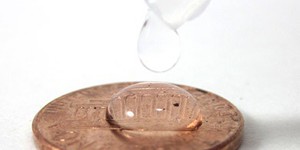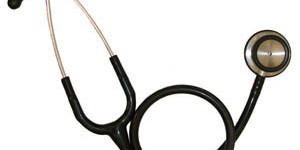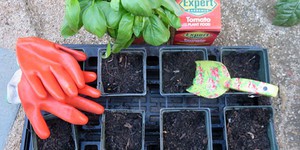Second Grade Science Projects (243 results)
|
Select a resource
Coding Projects
Sort by
|
One of America's favorite snacks is potato chips. Although potato chips are very tasty, some varieties are not very healthy for you. A typical 1-ounce (oz.) serving of a well-known national potato chip brand contains 150 calories, 90 of which are from fat. How greasy are your favorite potato chips? Try this science fair project, and you'll get a visual understanding about how much oil a potato chip can hold.
Read more
Have you ever seen a magician float an object in the air? If so, you might think that levitation (making things float) is just a magic trick, but the truth is you can use an invisible physical force to levitate a magnet! Try this science project to find out how.
Read more
Do you ever wonder how markers are made? Where do all of those colors come from? Many of the colorful dyes we use come from plants. Could you create vibrant colored natural dyes? Could you turn these dyes into art supplies? You can! In this science project, become a scientist and engineer and make your own marker using homemade plant dye!
Read more
Did you know that even though water is a liquid, it isn't always able to get into little cracks and crevices? So how do clothes go from caked with mud to clean? How can dishes go from greasy to glistening? With a few simple household items, you can find out!
Read more
What do you do with your old wooden pencils when they get too short to hold? Don't throw them away; you can use them to make circuits! This project will show you how to use pencils to make resistors, an important part of many electrical circuits, and test how they affect the brightness of a lightbulb in a simple circuit.
Read more
What does the phrase, "Like a breath of fresh air," mean to you? This common phrase can have different meanings: calming, relaxing, invigorating, energizing or CLEAN! After all, you never hear anyone say, "Like a breath of dirty air," do you? Find out how clean the air is in this simple experiment.
Read more
Doctors use many complicated tools to check the health of patients. But you can make some medical tools at home—like a stethoscope! A doctor uses a stethoscope to listen to a patient's heart. In this science project, you will make three of your own homemade stethoscopes and figure out which stethoscope design works best and why.
Read more
If you love cooking, decorating cakes, or making edible table decorations, this is a project for you! You will compare three different recipes for rice paper and discover the recipe that works best for your application!
Read more
While looking at a package of dry yeast it is hard to believe that the package has organisms in it that are alive. But add the right ingredients and presto, the mixture becomes a bubbly, oozing, mess of life! What are the right ingredients? What does that yeast need to become active? Do this science project and figure it out for yourself!
Read more
Plants need nitrogen to grow healthy stems and leaves. Although nitrogen is the most abundant element in the air we breathe, that form of nitrogen cannot be used by plants. Nitrogen contained in fertilizer, on the other hand, is readily taken up by plants. In this experiment, you will compare plants grown without nitrogen fertilizer to plants grown with nitrogen fertilizer.
Read more
|














